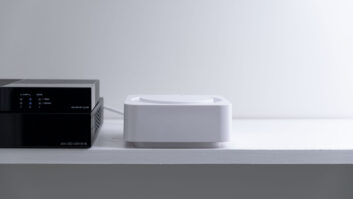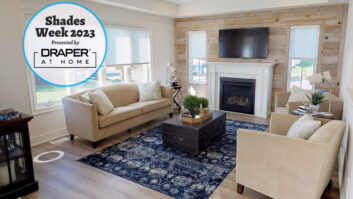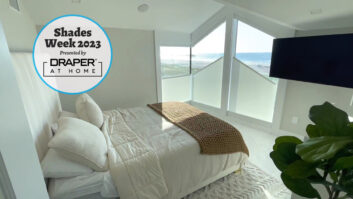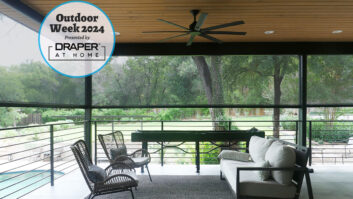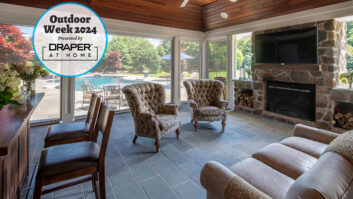While it is well known that people who live in glass houses shouldn’t cast stones, other, less popular restrictions include a complete lack of privacy and intense heat and fading due to constant sun exposure. Despite the drawbacks, however, many high-end homeowners create these clear-walled domiciles to take advantage of incredible views and to create a way to enjoy the outdoors without direct contact to it — leaving clever residential integrators to come up with creative solutions that not only enhance the aesthetics of the homes, but also makes the lives of its occupants easier.
Late last year the professionals at Casaplex, a Maryland-based full-service integration firm, faced just such a challenge with a 10,500-square-foot home in Warrenton, VA whose exterior is completely covered in glass. The mission was to efficiently regulate the amount of sunlight entering the space and control solar heat gain, prevent sun fading, and ensure privacy. And it had to look good.
The solution Casaplex devised uses a Crestron lighting and automated shades solution to control the 18 windows and four glass doors throughout the home. “The biggest challenge was hiding the shades in pockets, which required some extensive coordination between our design team the architect,” says Derek Goldstein, CEO, Casaplex. “We wanted a minimalistic look, and the shades had to come out of these small slats. That was very challenging.”
Fortunately, Casaplex was brought in about halfway through the construction of the home, so they were able to work with the builder and architect to achieve the desired results.
Thinking about adding shades to your offerings? Check out Todd Anthony Puma’s advice here.
Taking Control
The key to this system is user-friendliness and a robust automation system for both the shades and the lights — working together to create the right environment for the people in the house, as well as energy management and security. In addition to the shades, the windows and glass doors throughout the home are also motorized on their own, which added some complexities and some opportunities for the Crestron automation system.
From a lighting standpoint, 95 percent of the fixtures were Creston Dali, which made it easy to integrate with the shading system. The 44 shades are all controllable via custom-engraved Crestron keypads in the living areas, as well as through iPads, whose programming allows for simple control over the entire home.
Setting the Scenes
The programming of the shades reflect the desires of the homeowners and the demands of Mother Nature. To protect all of the home’s valuable interiors, Casaplex automated the west-facing shades to close every afternoon to block the harmful UV rays, and also to stave off heat gain.
“For energy management, we used a Crestron DIN-AP3 to set up the system and maintain it, and make it work with the motorized screens,” says Goldstein. “The way that preset looks at the other shades is an energy saving technique that eliminates the solar heat gain, which in turn reduces the energy consumption of the home.”
In addition to energy management, the system also contributes to security —with all the shades lowering once the system is armed and all the home’s lights flashing when an alarm is triggered. Additionally, the bedrooms have wake-up scenes programmed that will raise the shades and turn on lights when it is time to wake up — which is more inspirational to getting out of bed than any alarm clock.
“We didn’t introduce voice command in this system due to privacy concerns,” says Goldstein. “But it could easily be added later once there’s a more secure platform.”
The residence does have a home theater, but it is located in the basement so shading techniques were not necessary. Still, Casaplex did set up the lighting system in that room as well, complete with a number of automated scenes.
Selling Shades
As a full-service integrator, Goldstein sees the benefits in offering lighting and shade services. “I think it’s the most undersold and underappreciated system,” he says, “and one that is critical when it comes to user experience. It’s one of those solutions that really delivers on the promise of improving the client’s lives through technology, and it sells itself once someone sees it. I think that it would help anyone’s business if they went down that path.
“They just have to be very cautious and be prepared for what comes with lighting control. For example, getting the correct electrical experts involved is mandatory. And you will want a specialist who is extremely organized, because lighting and shading changes happen very quickly and frequently throughout the project. If you don’t focus on that, then it could really cost you money.”
For Casaplex, this system has led to additional business from the same, very pleased customer — they are now working on outfitting a guest house on the property with a similar system, but on a smaller scale.








